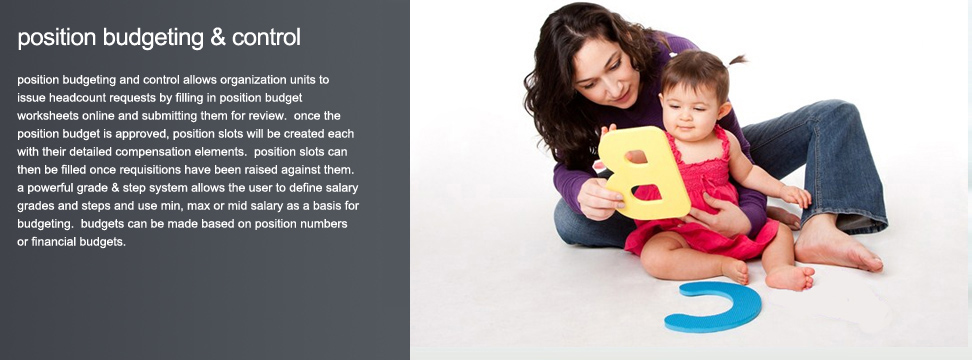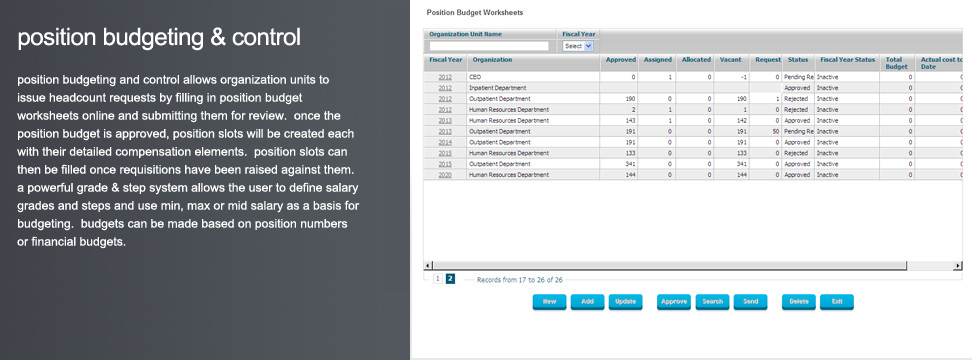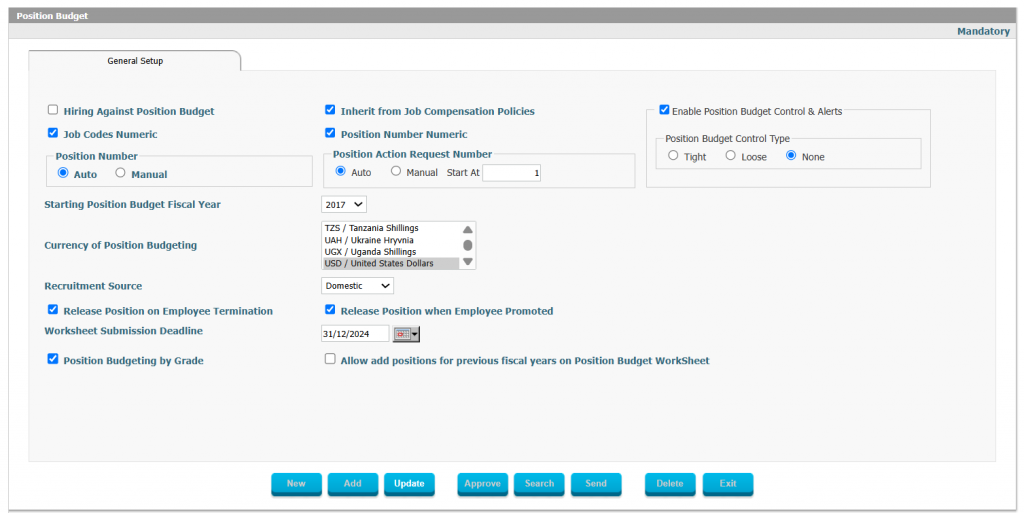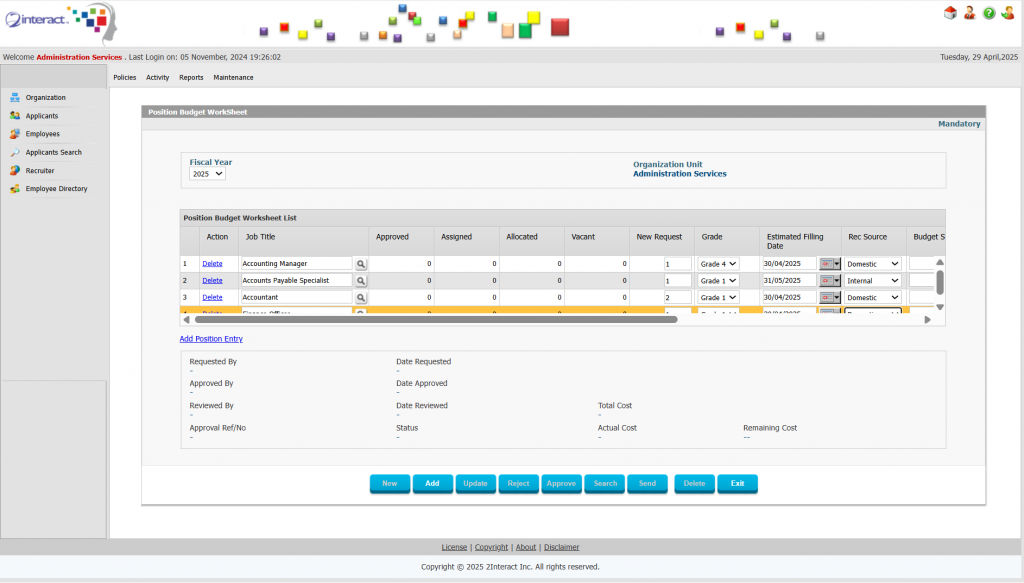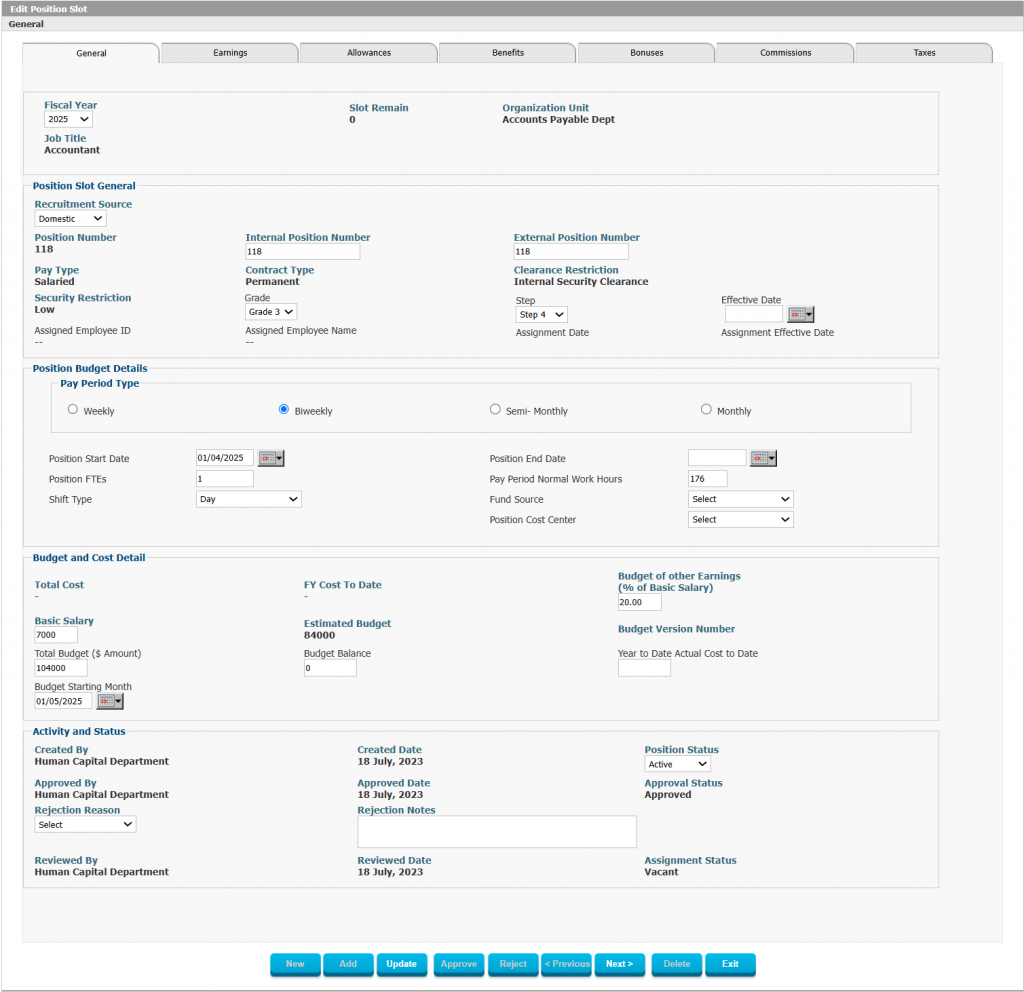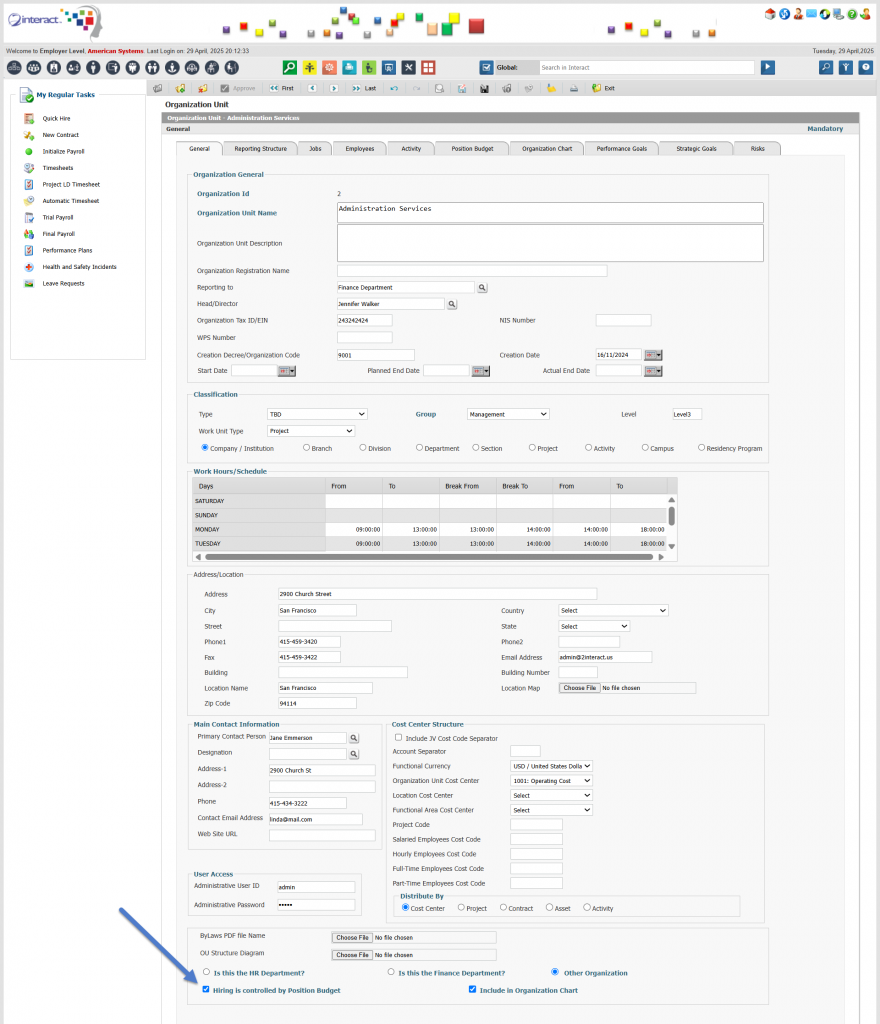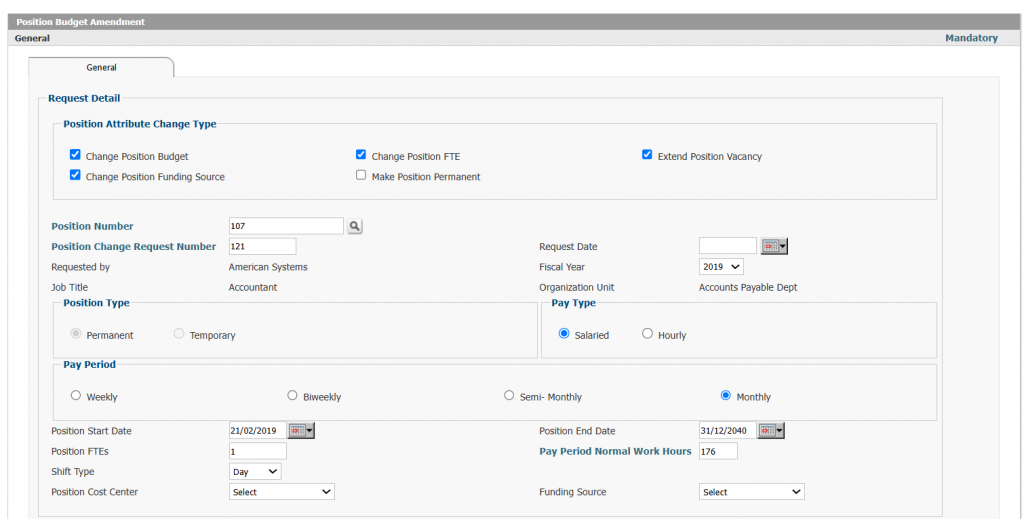Interact HRMS Position Budgeting and Control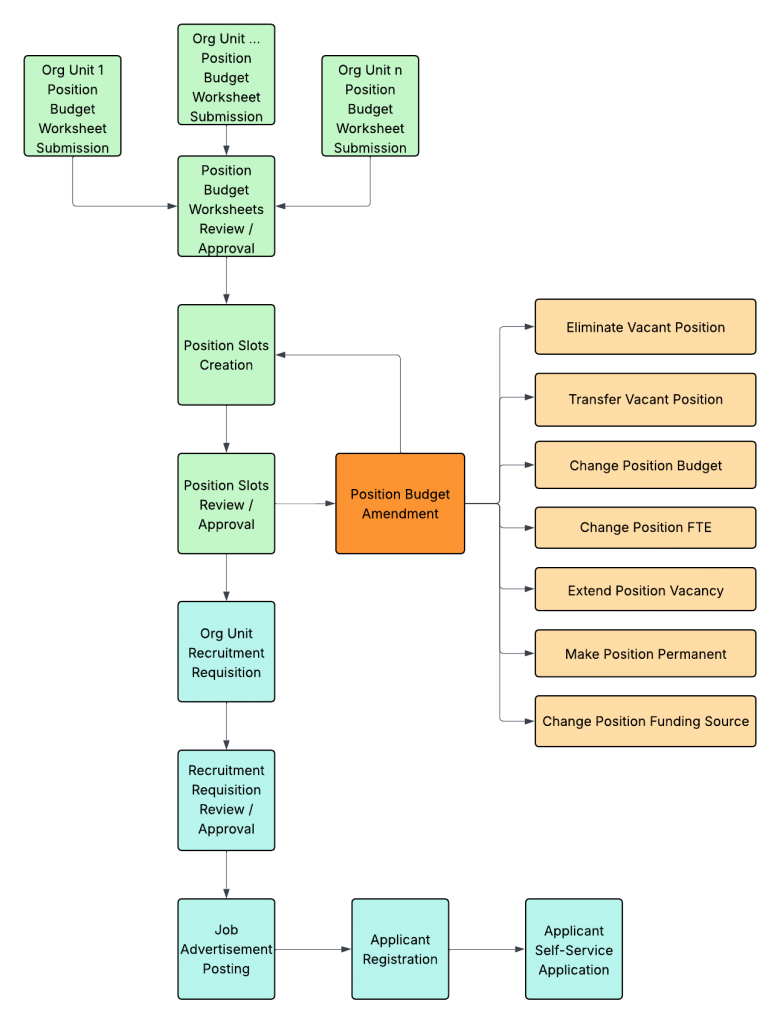
Figure 1: Position Budgeting and Control Framework
Figure 2: Position Budgeting Setup
The Interact HRMS Position Budgeting and Control module provides organizations with a comprehensive solution for managing manpower and staffing budgets based on specific, approved position allocations. For organizations that operate under a structured manpower plan, this module supports and enforces a position-based hiring process, where each department or organizational unit can only hire within the constraints of a predefined position budget. This budgeting model allows HR and finance departments to tightly control staffing levels, ensuring that resources are allocated efficiently and aligned with organizational priorities.
This module enables organizations to establish position budgets during the budgeting period for the next fiscal year/period through a streamlined budgeting process. Department heads use position budget worksheets to outline their manpower needs, which are then consolidated and reviewed by HR and finance teams for approval. Once the position budget worksheet is approved, position slots can be created with specific attributes such as compensation details, making it possible to accurately track staffing costs and manage open positions across the organization. The module comprises two main subsystems—Position Budgeting (or Manpower Planning) and Position Control—each designed to meet the unique challenges of budget-driven hiring and position management.
Position Budgeting Cycle and Workflow
Figure 3: Position Budgeting Worksheet
The Position Budgeting and Control module follows a structured position budgeting cycle, beginning with the creation of a fiscal-year-based position budget worksheet. This worksheet serves as a foundational document for each department, where organizational unit heads specify their anticipated manpower requirements for the coming year. Once completed, these worksheets are submitted to HR and finance for consolidation and review. This multi-step process ensures that each department’s position requests align with the organization’s strategic goals and budget constraints.
After initial review, the consolidated position budget is sent for approval. This formal approval step is essential for creating a clear, organization-wide manpower plan. Once the position budget is approved, individual position slots can be created within the module, which allows for detailed tracking of each position, including compensation elements, status, and budget allocation. This workflow provides a clear and transparent process that enables HR and finance teams to manage staffing costs proactively while ensuring compliance with the approved budget.
Defining Position Slots with Comprehensive Compensation Elements
Figure 4: Position Slot Definition
Position slots are fundamental units within the Position Budgeting and Control module. Each position slot represents a unique, budgeted position within an organization and can be defined with a wide range of compensation elements, including earnings, allowances, benefits, deductions, bonuses, commissions, and expenses. This granular control over compensation components allows organizations to create accurate position budgets that reflect the full cost of each position.
For example, if a position includes a specific allowance for travel or a commission structure, these elements can be defined at the position level. This level of detail ensures that each position slot accurately represents its cost to the organization, allowing for more precise financial planning and reporting. Additionally, position slots can be tailored to align with each department’s unique staffing requirements, ensuring that the organization maintains control over hiring costs across different units.
Position Control and Recruitment Management
The Position Budgeting and Control module includes a robust position-based recruitment system that enforces budget compliance during the hiring process. Under this system, departments can only recruit for vacant, budgeted positions, ensuring that hiring aligns with the approved manpower plan. By linking recruitment directly to the availability of approved position slots, the module helps organizations prevent overstaffing and control labor costs.
For each recruitment request, or requisition, the requisitioner will need to have a vacant position with an approved position slot within the budget. This control mechanism enforces discipline within the hiring process and ensures that departments do not exceed their allocated staffing levels. Furthermore, the module allows for position-based hiring and contract management, adding another layer of oversight to the hiring process. This integration between position budgeting, recruitment, and contract management helps organizations manage their workforce within the constraints of their approved budget.
Automatic Inheritance of Job Classification Information
To streamline the creation and management of position slots, the module includes an inheritance feature that automatically applies job classification information to each position. When creating a requisition based on a position slot, the module can pull relevant details from job classifications, including grade, education, and experience requirements. This automatic inheritance reduces manual data entry, ensures consistency across position slots, and allows HR teams to focus on strategic tasks rather than administrative work when preparing job vacancy ads.
This feature also supports a standardized approach to staffing, where each position slot reflects the job’s specific qualifications and requirements. By automating the inheritance of job classification data, the Position Budgeting and Control module helps organizations maintain consistency across positions and ensures that each position slot is aligned with the organization’s broader HR policies.
4-Dimensional Salary Grade-Step Matrix
Figure 5: Job-Grade-Step Matrix
To support accurate salary definitions, the module includes a 4-dimensional salary grade-step matrix. This matrix considers four key factors—grade, step, education, and years of experience—in calculating compensation for each position. This matrix enables organizations to establish fair and transparent salary structures that account for individual qualifications and tenure, making it easier to maintain internal equity and comply with regulatory standards.
The grade-step matrix can be customized to align with each organization’s compensation philosophy, allowing HR teams to create salary structures that reflect the company’s goals and values. With this matrix, the Position Budgeting and Control module provides a foundation for effective and equitable compensation management across all positions.
Position Budget Flag for Controlled Hiring
Figure 6: Organization Unit Definition with Position Budget Control Flag
The module includes a position budget flag, which can be activated to enforce budget controls on hiring within specific organizational units. When the position budget control is enabled, the department cannot recruit or hire beyond the approved position budget, adding an additional layer of budgetary control. However, the module is flexible enough to allow certain units to bypass these controls and engage in open hiring if desired. This flexibility enables organizations to balance strict budgetary control with the need for agility in certain units.
For example, departments with fluctuating staffing needs may benefit from open hiring, while others require strict control over staffing levels. The position budget flag allows organizations to adapt their hiring practices to meet the unique needs of each department, providing both control and flexibility.
Vacancy Tracking and Position Status Monitoring
The Position Budgeting and Control module offers detailed vacancy tracking and position status monitoring, allowing HR teams to track the status of each position slot across multiple categories, including approved, assigned, allocated and vacant. This feature provides a real-time view of available and filled positions within each department, helping HR and finance teams monitor workforce allocation effectively.
By tracking vacancy status, organizations can respond more quickly to staffing needs and identify areas where resources may be underutilized. This functionality is particularly valuable for organizations with complex staffing structures, where it can be challenging to maintain visibility into open positions and workforce distribution.
Position Budget vs. Actual Manpower Cost Analysis
To help organizations monitor and manage labor costs, the module includes a Position Budget vs. Actual Manpower Cost Analysis feature. This analysis allows HR and finance teams to compare budgeted costs against actual expenditures, providing valuable insights into staffing and payroll trends. This comparison helps organizations identify discrepancies between budgeted and actual costs, enabling them to adjust their manpower plans as needed.
With this feature, organizations can assess the effectiveness of their position budget, make data-driven decisions, and adjust future budgets to reflect actual labor costs more accurately. This functionality ensures that organizations remain on track financially and helps prevent overspending on staffing.
Position Budget Adjustment and Reallocation Features
Figure 7: Position Budget Amendment Request
The Position Budgeting and Control module includes flexible features for adjusting and reallocating position budgets as organizational needs evolve. These features allow organizations to eliminate vacant positions, release positions, transfer vacant slots from one unit’s budget to another, or amend position attributes. HR teams can amend position compensation budgets, change funding sources, extend position vacancies, change the FTE count or convert temporary positions to permanent roles.
These budget amendment features provide the agility needed to respond to changing business requirements, enabling HR departments to manage staffing dynamically while maintaining budgetary discipline. With these options, the Position Budgeting and Control module ensures that organizations can adapt their manpower plans as required by operational shifts.
Integration with Other Interact HRMS Applications
The Position Budgeting and Control module is fully integrated with other Interact HRMS applications, providing a seamless experience across the entire HR ecosystem. This integration allows organizations to align position budgeting with other HR processes, including recruitment, contract management, payroll, and performance management. By linking position budgeting with related HR functions, this module enables a holistic approach to workforce management, supporting more efficient and accurate HR operations.
Whether an organization is creating new position slots, adjusting budgets, or managing recruitment, the Position Budgeting and Control module works in concert with other HRMS components to streamline workflows and eliminate redundancies. This integration simplifies HR operations, allowing organizations to focus on strategic workforce planning and budgeting.
Summary: Interact HRMS Position Budgeting and Control
The Interact HRMS Position Budgeting and Control module is a powerful tool for organizations that manage staffing through a structured manpower plan. Key benefits include:
- Structured Position Budgeting Cycle: Establishes a fiscal-year-based position budget with a review and approval workflow.
- Comprehensive Position Slot Definition: Allows detailed setup of compensation elements for each position.
- Position-Based Recruitment and Hiring Control: Enforces hiring within the approved position budget.
- 4-Dimensional Grade-Step Matrix: Supports equitable salary definitions based on grade, step, education, and experience.
- Flexible Position Budget Controls: Provides controlled hiring for specific units while allowing flexibility where needed.
- Vacancy Tracking and Budget Analysis: Enables real-time vacancy tracking and budget vs. actual cost analysis.
- Position Adjustment and Reallocation: Offers tools for modifying budgets and reallocating resources as needed.
- Full Integration: Seamlessly links with other Interact HRMS applications for a comprehensive HR solution.
This module enables organizations to enforce budget compliance, streamline recruitment, and maintain control over staffing costs, supporting a disciplined approach to workforce planning and management.

